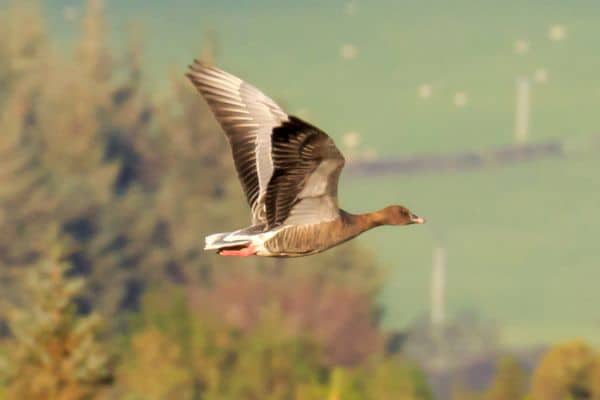
Getting their ducks in a row
As wildfowling comes under increasing pressure from changes in lifestyle and consenting arrangements, the Leicestershire Wildfowlers Association is one of several forward-looking clubs pushing the boundaries.
Get information on the legal shooting season for mammals and birds in the UK.
Apply for funding for your project or make a donation today
Comprehensive information and advice from our specialist firearms team.
Everything you need to know about shotgun, rifle and airgun ammunition.
Find our up-to-date information, advice and links to government resources.
Everything you need to know on firearms law and licensing.
All the latest news and advice on general licences and how they affect you.
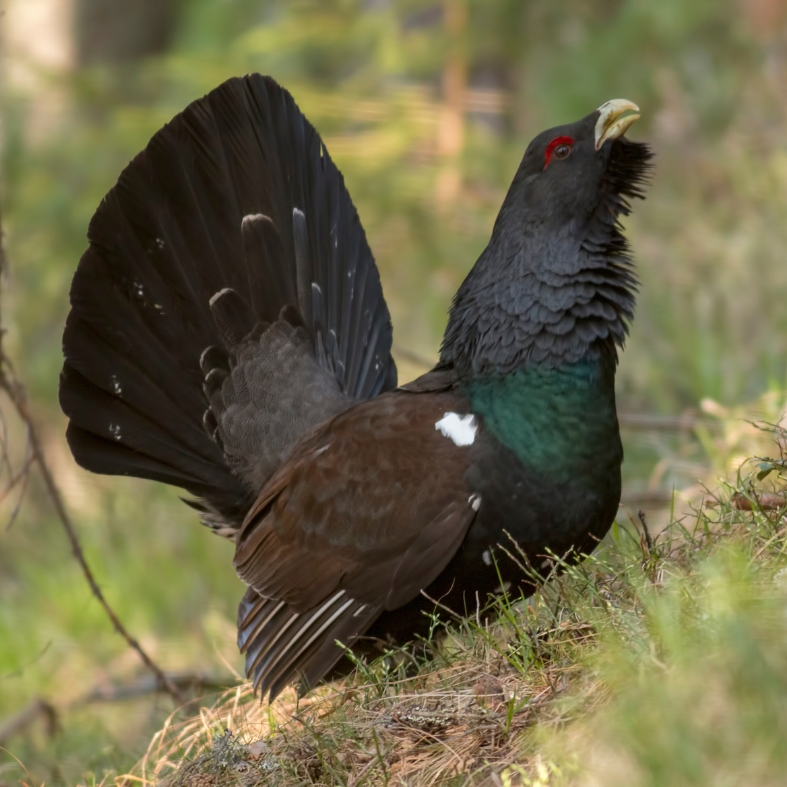

The Scottish capercaillie population risks extinction within our lifetimes unless urgent action is taken. But a recovery plan, initiated by the Scottish Government and kickstarted with support from the BASC Wildlife Fund, is already making progress, as Carolyn Robertson reports.
Capercaillie have been living in our pine forests since the last Ice Age. The largest grouse in the world, they are powered by pine needles and known in Gaelic as the Horse of the Woods. The males typically weigh around four kilograms and have a wing span of more than a metre, making them instantly recognisable.
In the UK, they are only found in Scotland, where they form part of a global population extending from Russia to Scandinavia and across Europe from the Black Forest to the Pyrenees. Capable of reaching a grand old age of six, male capercaillie can hold huge territories in the forest.
Each spring they attend lek sites – used by capercaillie for generations – to perform a display of pops, whistles and flutter jumps to attract the attention of females. From a population of around 20,000 birds in the 1970s, numbers have now declined to their lowest recorded level, with the latest national survey (2021/22) estimating that there are only 532 capercaillie left in Scotland.
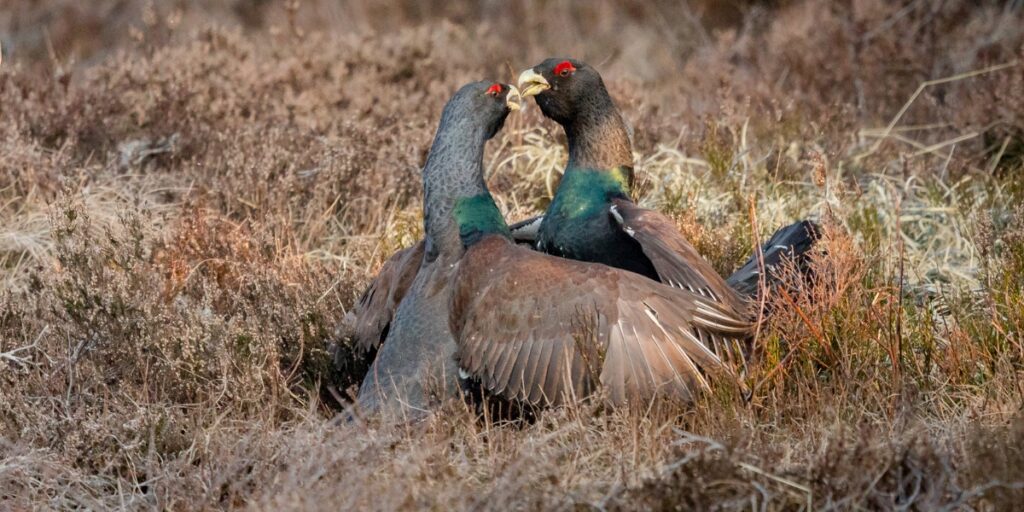
In the early 1990s, conservation science predicted they would be extinct in Scotland by around 2010. The fact the birds are still in our forests speaks volumes about conservation work over the last 30 years. While our capercaillie population demands continued support, such ongoing efforts are not uncommon when dealing with highly vulnerable species.
Now, thanks to the Cairngorms Capercaillie Project led by the Cairngorms National Park Authority since 2018, the widest range of people yet, from mountain bikers to dog walkers, are actively helping capercaillie alongside ongoing efforts by land managers.
Capercaillie face many challenges, not least predation, human disturbance and climate change. They are also a specialist species, requiring extensive areas of Scots pine forest.
The loss of this habitat over time is a recognised cause of population decline and has led to isolation. With less space to live, capercaillie become more vulnerable to predation, disturbance and inbreeding.
As birds arrive and disperse from lek sites in Badenoch and Strathspey in the Highlands, where 80 per cent of the UK capercaillie population now lives, they also run the risk of colliding with unmarked deer fencing.
While much progress has been made over the years in marking (to make them more visible) and removing deer fences, unmarked fences still stand and contribute to juvenile and adult mortality.
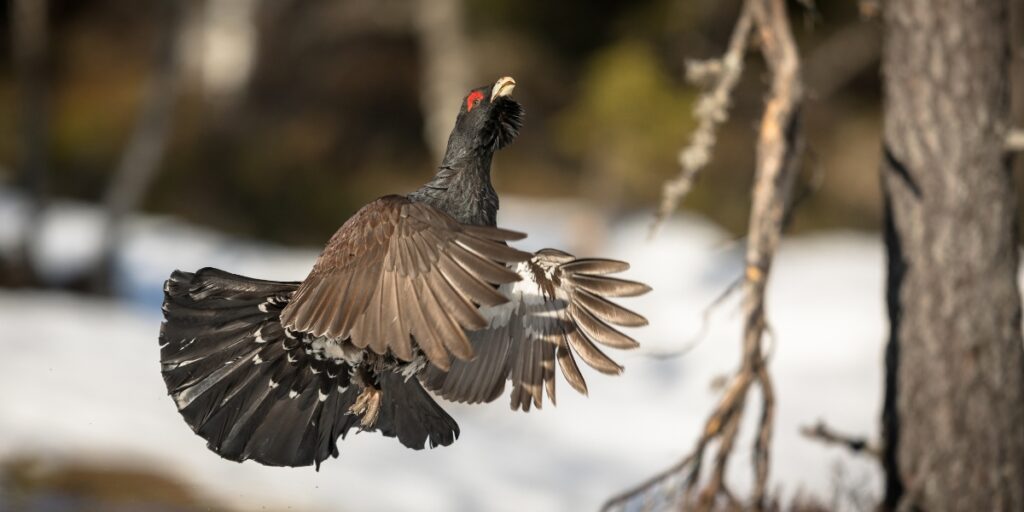
Hens disperse further from lek sites than males – up to 16km – so are most likely to benefit from these fences being marked or removed. With the threat of collisions removed, recent modelling by GWCT suggests capercaillie numbers could be 16 per cent higher and the risk of extinction within 50 years might fall from 95 per cent to just 3 per cent.
The Cairngorms holds the largest area of unfenced woodland regeneration in Scotland and plans are in place to further reduce the amount of fencing across the UK’s biggest National Park by removing more redundant fences. Thanks to a £52,405 grant from the BASC Wildlife Fund, the Cairngorms Capercaillie Project has been able to do exactly that and rapidly mark and remove more than 10km of fencing within dispersal distances of lek sites.
The work was completed in March, just in time for the lek season. The project worked at pace over the winter with land managers and fencing contractors in the Cairngorms National Park. The net result is the birds are now able to move over 400 hectares of core habitat with either no risk or a significantly reduced risk of colliding with fences.
To identify fences that pose a risk to capercaillie, the Cairngorms Capercaillie Project recruited and trained a team of fence monitoring volunteers in 2022. The volunteers have now walked more than 200km of fence lines in capercaillie areas across the National Park in all weathers to record the status of fences.
The work is essential to help busy land managers, and using the information collected by the volunteers, the project has been able to create a comprehensive database of fences and their status in capercaillie areas to inform targeted action and leverage funding. The volunteers have also gained a huge amount from the experience.
Volunteer Colin Maclennan said: “It’s always rewarding to volunteer with a clear purpose. Along with three other volunteers, fuelled by cake and enthusiasm, the core of our role is to physically walk the fences and record what we find using a dedicated app which works well and makes the process simple.
“It’s a great excuse just to get out and explore these lonely, lovely places. I’d never have visited here otherwise, there’s no paths or signs – just the opportunity to get close to nature, both physically and in understanding. I enjoy all of this, I get to know so much more about one of my favourite parts of Scotland, as well as hopefully helping to protect its wildlife.”
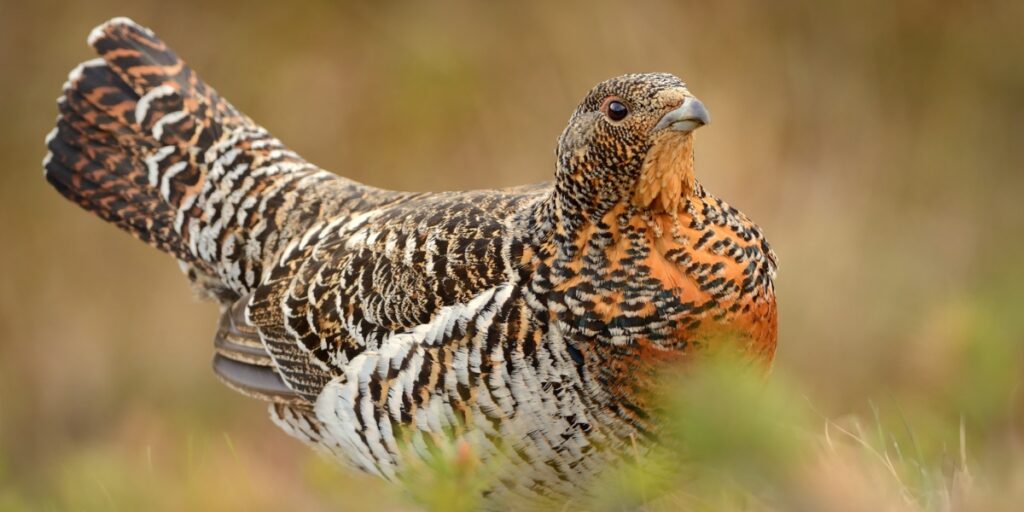
Continuing to reduce the risk of capercaillie colliding with fences is one of the many elements of the Capercaillie Emergency Plan (CAP) that will be delivered from this summer. Aligned with the Scottish Biodiversity Strategy which prioritises the landscape scale restoration of pinewood habitat to safeguard capercaillie, the CAP is focused on immediate and targeted measures that will rapidly benefit the species, from reducing the impacts of predation and disturbance to reducing the risk of fence collisions.
A wide range of public and private funding and volunteer support will need to be secured to deliver the plan. Success will also depend on high levels of collaboration from all stakeholders, something BASC has already demonstrated by helping to kickstart it with funding to ensure capercaillie are in our forests for generations to come.
Carolyn Robertson is the project manager for the Cairngorms Capercaillie Project which aims to secure a long-term future for capercaillie in the UK. Funded by the National Lottery Heritage Fund, the partnership project is led by the Cairngorms National Park Authority.


As wildfowling comes under increasing pressure from changes in lifestyle and consenting arrangements, the Leicestershire Wildfowlers Association is one of several forward-looking clubs pushing the boundaries.
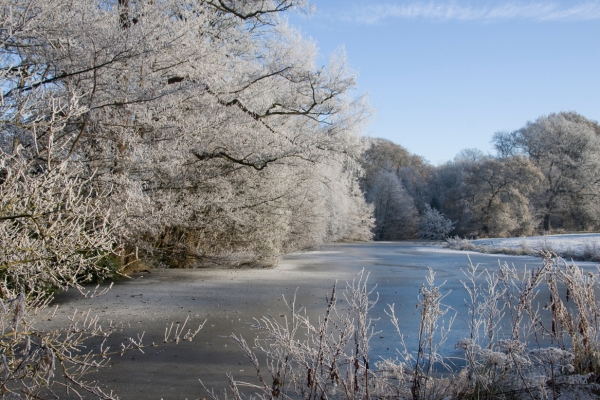
Due to widespread severe weather, BASC is calling for those who shoot in Scotland to exercise restraint in the shooting of ducks, geese and waders including reared mallard.
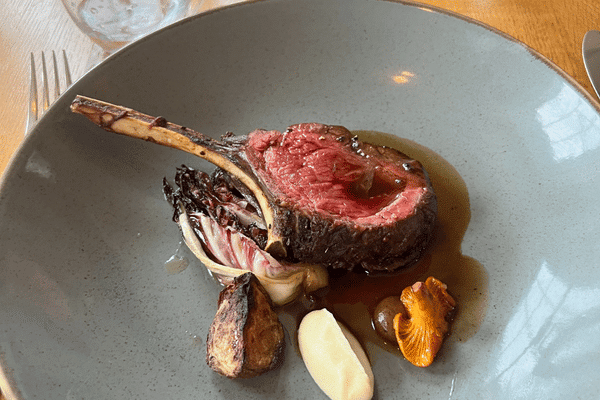
Members of the Scottish Parliament were treated to the ‘best of Scottish game’ in celebration of Great British Game Week.
Sign up to our weekly newsletter and get all the latest updates straight to your inbox.
© 2025 British Association for Shooting and Conservation. Registered Office: Marford Mill, Rossett, Wrexham, LL12 0HL – Registered Society No: 28488R. BASC is a trading name of the British Association for Shooting and Conservation Limited which is authorised and regulated by the Financial Conduct Authority (FCA) under firm reference number 311937.
BASC Direct Ltd is an Introducer Appointed Representative of Agria Pet Insurance Ltd who administer the insurance and is authorised and regulated by the Financial Conduct Authority, Financial Services Register Number 496160. Agria Pet Insurance is registered and incorporated in England and Wales with registered number 04258783. Registered office: First Floor, Blue Leanie, Walton Street, Aylesbury, Buckinghamshire, HP21 7QW. Agria insurance policies are underwritten by Agria Försäkring.
If you have any questions or complaints about your BASC membership insurance cover, please email us. More information about resolving complaints can be found on the FCA website or on the EU ODR platform.